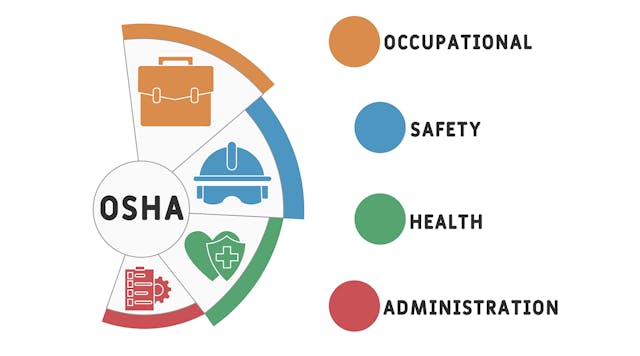As of Jan. 30, 2022, the minimum wage for federal contractors and subcontractors will increase from the current $10.95 an hour to $15.00 and is slated to rise annually after that.
The wage hike was decreed by President Biden in an executive order he issued earlier this year, declaring at the time that it would “bolster economy and efficiency in federal procurement.”
Labor unions have been seeking a nationwide $15 minimum wage for all kinds of workers for a number of years, campaigning under the banner of “Fight for Fifteen” and finding success for their efforts in a number of states, including California, Connecticut, Florida, Massachusetts, New Jersey, Illinois, Maryland and Rhode Island—usually phased in over several years.
In this case, employers who are contractors should keep in mind that the final rule issued by the Department of Labor does not apply automatically to all federal contractors, according to attorney Leslie Stout-Tabackman of the Jackson Lewis law firm.
For example, it does not apply to grants and contracts for the manufacturing or furnishing of materials, supplies, articles, or equipment to the federal government, or to contracts that are excluded from coverage under the Service Contract Act (SCA) or Davis-Bacon Act (DBA).
The rule includes a “less-than-20% exception” for workers who only perform work “in connection with” a covered contract, but do not perform any direct work on the contract.
For workers who spend less than 20% of their hours in a workweek working indirectly in connection with a covered contract, the contractor need not pay the $15 wage for any hours during that workweek.
In addition, the new minimum wage will apply specifically to new contracts; new contract-like instruments; new solicitations; extensions or renewals of existing contracts or contract-like instruments; and exercises of options on existing contracts or contract-like instruments on or after January 30, 2022.
Arrangements with the federal government and independent federal agencies that are included under the new rule are:
• Procurement contracts for construction covered by the Davis-Bacon Act, (DBA) but not the Davis-Bacon Related Acts.
• Service Contract Act (SCA) covered contracts.
• Concessions contracts—meaning a contract under which the federal government grants a right to use federal property, including land or facilities, for furnishing services.
• Contracts related to federal property and the offering of services to the general public, federal employees and their dependents.
The new minimum wage does not apply to:
- Contracts for the manufacturing or furnishing of materials, supplies, articles, or equipment to the federal government.
- Grants.
- Contracts or agreements with Indian Tribes under the Indian Self-Determination and Education Assistance Act.
- Contracts excluded from coverage under the SCA or DBA and specifically excluded in the implementing regulations.
- Workers whose wages are calculated pursuant to special certificates, including learners (full-time students), apprentices, or messengers employed under special certificates.
Also excluded from the rule are employees who are defined as exempt from federal wage and hour laws under the Fair Labor Standards Act, such as overtime pay. This makes sense because in order to be exempt, they would have to be making more than $684 per week, or $35,568 annually and performing executive or administrative duties.
The final rule also specifies that the wage requirement will apply to new contracts and contract solicitations as of Jan. 30. The regulations, consistent with the language of the Biden Executive Order, strongly encourage federal agencies to require the $15 wage for all existing contracts and solicitations issued between the date of the Executive Order (April 27, 2021) and the effective date of Jan. 30, 2022.
Similarly, agencies are “strongly encouraged” to require the new wage where they have issued a solicitation before the effective date and entered into a new contract resulting from the solicitation within 60 days of the effective date, Stout-Tabackman points out.
To prepare, she recommends that contractors and subcontractors of covered contracts should consider taking the following steps:
- Review existing multi-year contracts with options or extensions that may be exercised on or after January 30, 2022, to plan for wage increases at the exercise of the option or extension, but also review any contract modifications to see if an agency is including the requirement early than required, as is allowed under the Final Rule.
- Identify job titles that typically perform work directly on covered contracts and those that perform indirect work above 20% in a workweek.
- Plan for wage increases for covered workers who are not already making $15 per hour.
- Determine what the impact will be on existing collective bargaining agreements particularly on SCA-covered contracts.
- Prepare for submission of price/equitable adjustments based on wage increases if allowed under the contract terms.
One thing federal contractors will have to look forward to next year is the first annual adjustment to the minimum wage that will be pegged to the growth of the Consumer Price Index as it relates to workers (CPI-W)—especially if the current rate of inflation keeps up. The rule specifies that the Secretary of Labor will set the new amount in the last quarter of the year for the following year, in this case in the fall of 2022 to take effect on Jan. 1, 2023.
In the final rule, DOL says that because wage growth tends to outpace the CPI-W, it assumes that current wages (in the absence of this minimum wage regulation) and the federal contractor minimum wage will grow at roughly the same rate. If workers’ wages grow faster than the CPI-W, then transfers of wages to employees ordered by DOL could be slightly overestimated, the department adds.










































































